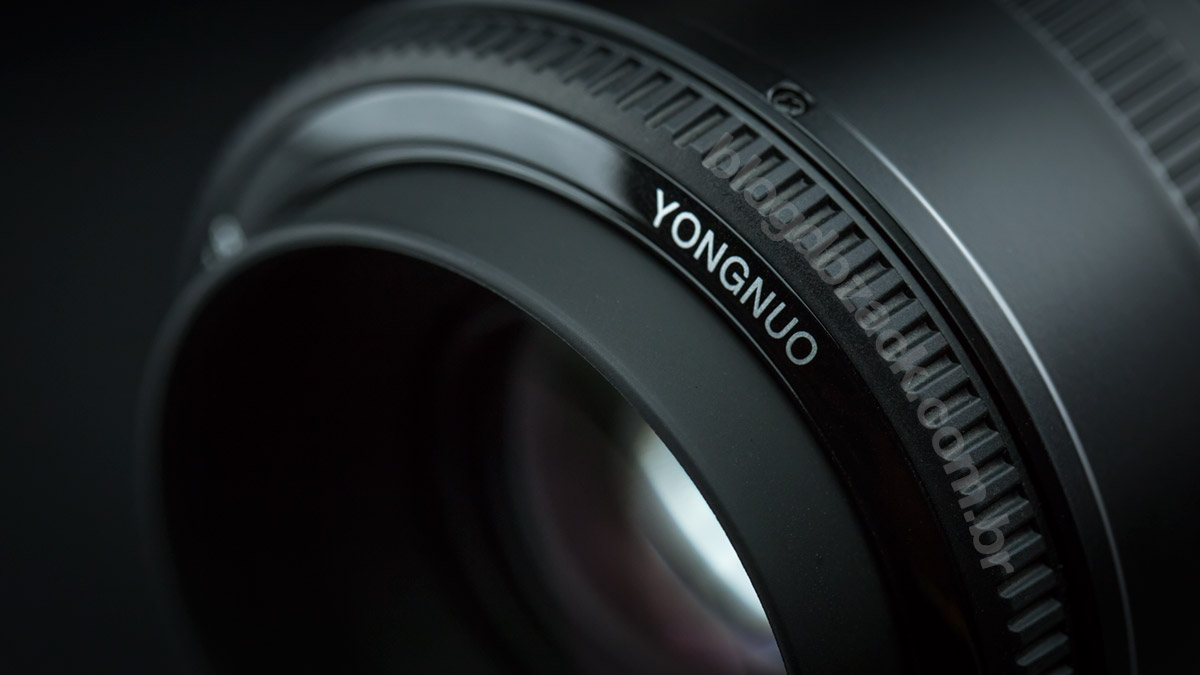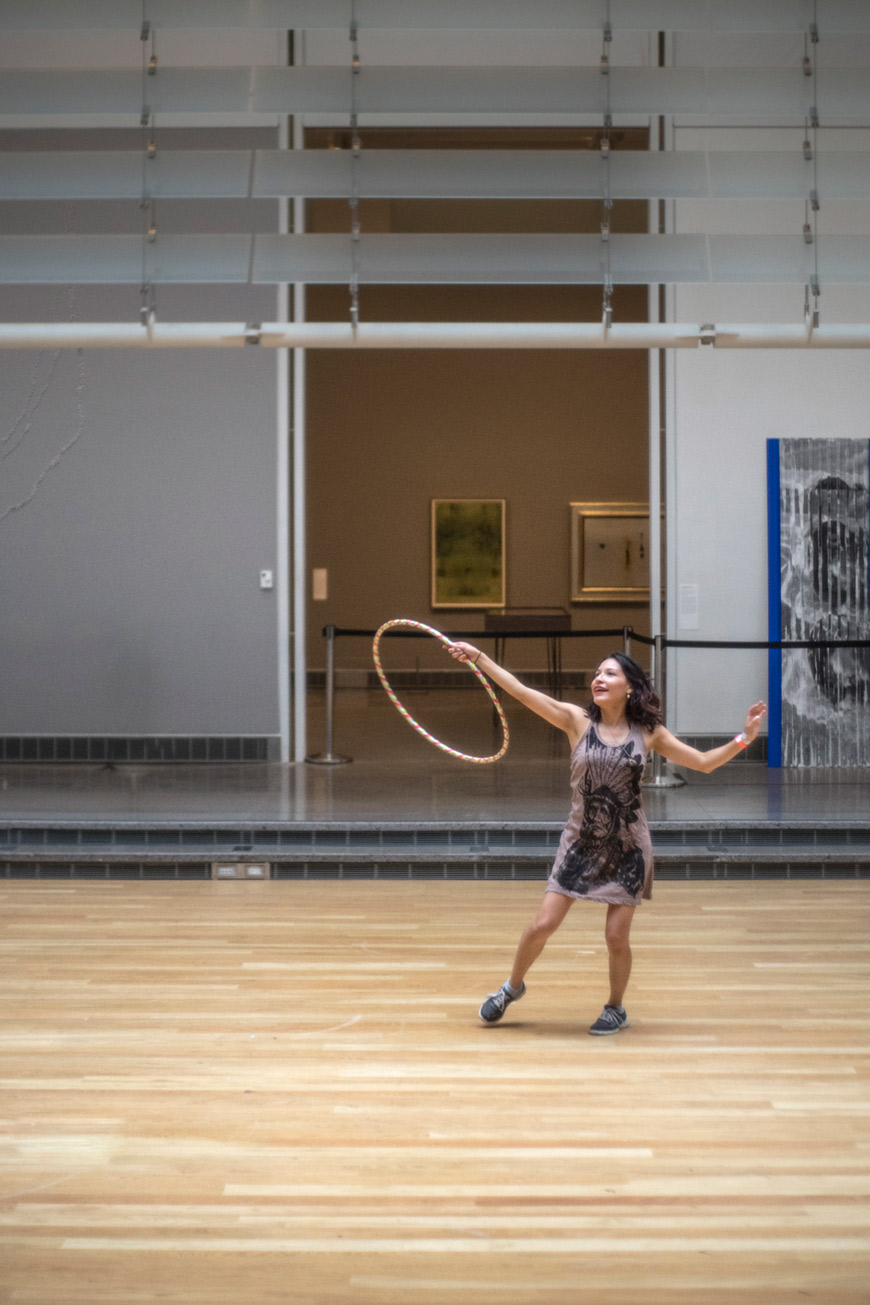Estimated reading time: 07 minutes.
June/2015 - The Yongnuo 50mm f/1.8 was the funniest announcement from 2014. A EF 50mm f/1.8 II rip-off, with same design and specs, its 15 minutes of fame were quickly over when Canon announced the new 50mm f/1.8 STM, with silent AF and updated optical formula. But the chinese have a card up their sleeve: at just US$62, half the Canon price, it has no peers for such a low cost on the SLR market. Known for low cost radio flashes, Yongnuo made its name among budget photographers, who don’t really understand the detours made for such a low cost. Remove an HSS board here, loosen a screw there… But how did they manage to create such a cheap lens?

Just like the EF 50mm f/1.8 STM article compared the EF 50mm f/1.8 II side by side, of course we’re be doing the same between such close products. But don’t judge a book by it’s cover, as the Yongnuo is essentially a different project! It’s larger, with a thicker 73mm external barrel (68mm on Canon’s) and 10g lighter at 120g total. On your hands it’s the same design: an all plastic built, with a built-in lens hood with the glass parts deep inside, AF/MF switch on the side, and same 52mm filters and panels. But as you see here and here, inside it is completely different.

It’s easy to use with a single rubberised manual focusing ring, a big upgrade from Canon’s mostly plastic. It’s smoother to the touch and my brand new copy is precise, well damped, firm without being heavy. Inside there’s the same DC micro motor, very noisy and not very quick, at the same class of the EF f/1.8 II: just press the button and it starts focusing. The inner barrel moves front and back but the filter thread won’t rotate, nice to use with polarisers. The manual focusing ring spins, so be careful not to touch it. But there’s no full time manual, and the switch must be on “MF” to disengage the ring. I used it mostly with the Sony A7 II and Metabones Smart Adapter IV.

Everything being so close to Canon represents many lost opportunities. For instance, the focusing ring is attached to the internal barrel, with hard stop at infinity and minimum distances (by-the-way, the same 45cm). So there could be a printed distance scale on the barrel, like Sigma does instead on a distance window. There isn’t. A stepping motor that is not the most expensive thing in the world, is also absent. There’s no metal mount neither. I know it’s a lot to ask for such a low price, but even the lack on innovation was borrowed from Canon. >:-D

Mounted on the EOS M with hybrid AF (contrast + phase detection) and it was very precise. But on the phase-only EOS 6D I wouldn’t shoot sports with it. It thinks before the action, and of course a high performance was not the priority here, but a low cost alternative. On the Sony A7II + metabones it simply denied auto focusing, hunting from MFD to infinity and not locking. It’s just not for me and probably not for you. But for budget photographer, with just US$60 for a prime lens, it’s ok to see the Yongnuo as an option. It works, fit the camera perfectly, and takes pictures.
NOTICE: Dear LENS DATA readers, I didn’t see and didn’t remove a protective plastic that came on top of the rear element of my Yongnuo 50mm f/1.8. That’s right, in 15 years I’ve never seen such thing: a ~glued~ plastic on top of a glass element, and just shot with it there. So of course all my photos came blurred from my street tests; thanks, China! But the forward evaluation was made over studio tests, and some image qualities like chromatic aberration, geometry distortion and bokeh were intact even with the plastic cover. Some “100% crop” were treated with the “clarity” slider on Adobe’s Camera Raw. All photos with the Sony A7 II + Metabones Smart Adapter IV.

“VR” at f/2.2 1/15 ISO400.
With a six elements in five groups formula, the Yongnuo is based on a double-Gauss design much like Canon and other brands. The aperture received a seven rounded blades update for theoretically better bokeh, smoother stopped down. But for US$62 and no credentials on optical manufacturing, the Yongnuo performance is just fair. It’s not better than Canon’s but ahead of most kits, as we’re talking about a prime lens after all. The center performance is great with plenty of resolution, but unfortunately the corners are not improved two or three stops down. You get what you paid for: it’s US$62 between you and your subject, for US$62 photo quality.
At f/1.8 the most striking quality is the pronounced vignette, together with an obvious lack of sharpness. Colours look vibrant because the frame edges are darker, bringing your attention to the center of the frame. It’s an intimate look, great to isolate your subject. The depth of field is short but the bokeh is questionable: it’s out of focus, but seems myope instead of a creamy colour blend. You can clearly see the light path: one strong contour, one fine edge, a blurred line, a reflection, and one final halo instead of a smooth, pleasing background gradient.

100% crop, you can see as many details as Canon’s 50mm.
Stopping down to f/8 and it improves a lot. But it’s not all the way to the corners, that lack resolution overall. It’s a fundamental difference: the Canon EF 50mm f/1.8 II has a larger “greatness area” than the Yongnuo, and it’s perfect by f/8. The chinese is not: the edges and a large area is never really sharp. It won’t work as well for landscapes, urban scenes, graphics… And I can’t really recommend it. It might work on APS-C bodies, as the smaller circle will discard the edges.

100% crop, even with a protective cover it works really well! :-D

100% crop, more than enough resolution near the center at f/8.
It’s same as most ultra low cost lenses. The Samyang are like this: nice center performance even wide open, with the corners lagging on a larger area compared to more expensive primes. It was like this even on the Nikon AF-S DX 35mm f/1.8G. But on full frame it’s very apparent an Canon’s is just one step ahead in corner performance. It’s hard to know what they did wrong, as the EF lens has a better performance unmatched by this Yongnuo.

“Tracks” at f/8 1/60 ISO125.

100% crop, high end performance ~with a plastic piece on the rear element~. O_o

“Panorama” at f/8 1/60 ISO5000.

100% crop, great with a protective plastic cover and ISO5000. :-D
Colours are neutral, great for such a low cost. Normally these lenses are yellowish but it didn’t happen with my Sony A7 II + Metabones Adapter IV. On a colder, LED lit room, it didn’t push white tones to sand. And the lateral chromatic aberration is still invisible, due to such simplified optical formula. Even around the edges where we tend to see many coloured halos, they were nowhere to be seem. It’s one less thing to fix in post, great for video recording. There’s no geometry distortion.

“World Fair” at f/8 1/60 ISO160; zero distortion at infinity.

“Hula Hoop” at f/1.8 1/640 ISO1600; lines are great to frame your subject.
Finally the bokeh is just like both Canons: awful. There’s no point adding a seven blade rounded aperture if there aren’t extra glass pieces to make it smoother. It looks myope with extra shapes on contrast edges. Not even the new EF f/1.8 STM fixed that because a simple six elements in five groups formula is not about smooth defocus. So it’s a good idea to carefully plan the background not to compete with your subject. If you really want to melt the background, pay for extra glass.

100% crop, notice the repetitive lines.

100% crop, it’s impossible to deny the repetitive lines.
I don’t know how many works are in slavery at the Yongnuo factory to produce a US$62 auto focus lens. And I can’t really complain about its performance. It’s not a direct replica to Canon’s EF 50mm: it is larger, with a rubberised focusing ring and different switch position. And inside the formula is just as good (or bad?), lacking extra elements to enhance resolution and bokeh. No matter how you look at it, if you need a large aperture lens and wants to save 50% off the Canon plastic fantastic prime, there’s no way around it. How not to love it? Nice shooting!